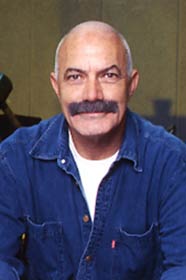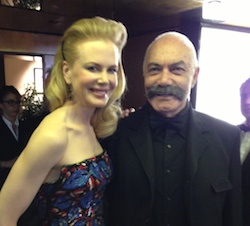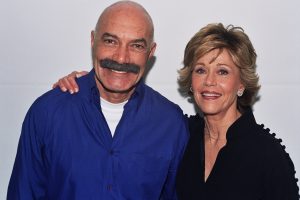




It’s a story of our history as Americans, our flaws, virtues and growing Awareness, woven through the simplest elements of all that which makes us human–love.
Sarah Green, producer
Historical Background
America did not begin with Columbus and the Nina or the Pilgrims and the Mayflower. Nor did it begin with the settlers of what became known as Jamestown, the first permanent English settlement, in 1607, which predated the Plymouth Rock landing by some 30 years. There were thousands of years of habitation and culture in Virginia by indigenous peoples who found their world turned upside down by the arrival of newcomers from distant shores.
In the early seventeenth century, North America is still the space that it has been for thousands of years, a land of seemingly endless primeval wilderness, populated by an intricate network of tribal cultures. Although these tribe-nations live in graceful harmony with their environment, their relations with each other are strife with tension. Then, an intrusion from the outside upsets the balance.
The Script and Central Characters
Malick wrote the script 25 years ago. Producer Green says: Terry had the idea in the 1970s, and he always kept in his mind and imagination.
Against the historically rich backdrop of a pristine Eden inhabited by a native civilization, Malick has set a dramatized tale of two strong-willed characters, Pocahontas (QOrianka Kilcher) and Captain Smith (Colin Farrell). The story centers on the relationship between a passionate and noble young native woman, the daughter of the Native chieftain Powhatan (August Schellenberg), and Smith, an ambitious solider of fortune, which find themselves torn between the requirements of civic duty and the dictates of their hearts.
Inspired by the historical characters of John Smith and Pocahontas, visionary filmmaker Malick has transformed the classic story into a sweeping exploration of love, loss, and discovery. The New World is an elegy of the America that was, with a critical look at the America that was yet to be created.
The Plot
The plot unfolds chronologically. The film begins on a spring day in April of 1607, three ships containing 103 men sail from their distant home, the kingdom of England, 3,000 miles to the east across a vast ocean. On behalf of their sponsor, the royally charted Virginia Company, they are seeking to establish a cultural, religious, and economic foothold on the coast what they regard as the New World.
Shackled below the decks of the lead ship, called the Susan Constant, is the rebellious John Smith, 27, sentenced to be hanged for insubordination. A vet of countless European wars, Smith is a soldier of fortune, though fortune has often turned its back on him. Too talented and popular to be hanged, he is freed by Captain Christopher Newport (Christopher Plummer). Newport knows that surviving in this wilderness will require the work of every man, particularly one of Smith’s abilities.
Most of the 103 in the original group were aristocrats ill prepared for life in this New World, and thus the settlement struggled to survive as their dream of finding gold was quickly extinguished. Captain Smith was entrusted to lead a food fathering expedition up the Chickahominy River. On that expedition, members of the native Powhatan tribe, the ruling tribe of the region accosted Smith and his men.
All but Smith was killed. Smith was taken to the Native American village, where he encountered Chief Powhatan’s daughter, Pocahontas, who taught him the culture and customs of her people. Months later, with enough food to help the settlement survive the winter, Smith returned to the Jamestown colonies. The following spring, Powhatan discovers that the settlement is intending to stay and prepares for war. Unbeknownst to him, Pocahontas alerts Smith of the impending battle and when his tribe is thwarted, Powhatan realizes it was his daughter who betrayed them. She is banished from her tribe and family forever.
Pocahontas was forced to live with a neighboring tribe and eventually was traded to the English as an insurance policy against further attacks by her father’s tribe. She lived among the settlers, slowly adapting to their way of life. During this period, Smith was called back to England to lead other expeditions. He would only see Pocahontas one more time, years later, when she came to England.
Eventually, more supplies and colonists arrived in Jamestown from England, among them widowed English aristocrats John Rolfe (Christian Bale), who was one of the first to farm the tobacco that soon became Jamestown’s crash crop. Drawn together by a shared sense of personal loss, Po came to know and love Rolfe, eventually marrying him and having a son.
Literary Sources
Not much is known about what actually happened in 1607. The script is based on the writings of a few people who were there at the time, though their accounts often contradict each other. Some of the narration is taken from what was written by John Smith himself. Malick has taken the myth of John Smith and Pocahontas and used it serve his vision of cultures connecting and colliding, and the powerful consequences of misunderstanding.
Even so, the movie is based on Edward Wright Hale, edited volume, Jamestown Narratives: Eyewitness Accounts of the Virginia Colony: The First Decade, 1607-1616, published by Random House in 1998, and on David A. Price’s Love and Hate in Jamestown: John Smith, Pocahontas, and the Start of a New Nation, published by Random in 2003.
Postscript
When John Rolfe brought her to England, she was presented to the King and Queen as the Princess of Virginia, and for a brief moment, was the toast of London. However, she was soon struck down with disease and died on the voyage back to America at the age of 21 (some say 22).
Rolfe, fearing his son would not be able to survive the arduous voyage back to America, left him in England and made the ocean crossing alone. He died in the wars that Powhatan’s brother, Opechancanough (played by Wes Studi) unleashed against the English. Father and son never saw each other again.
According to Price’s book, Love and Hate in Jamestown: It would be another year before they would learn the extent of their naivetegarding Opechancanough, but they would learn.
On Friday, March 22, 1622, the colonists and the natives interacted in their everyday manner until the natives abruptly began their assault. The next morning, at least 347 (some say 400) English were killed. The colony’s population beforehand had been roughly 1,240, so the mortality amounted to somewhere between a quarter and a third of the colonists.
John Smith never married, and never left England, though he had plans to return to New England. Smith spent 11 years after his return from Virginia in a vain quest for backing new ventures.










